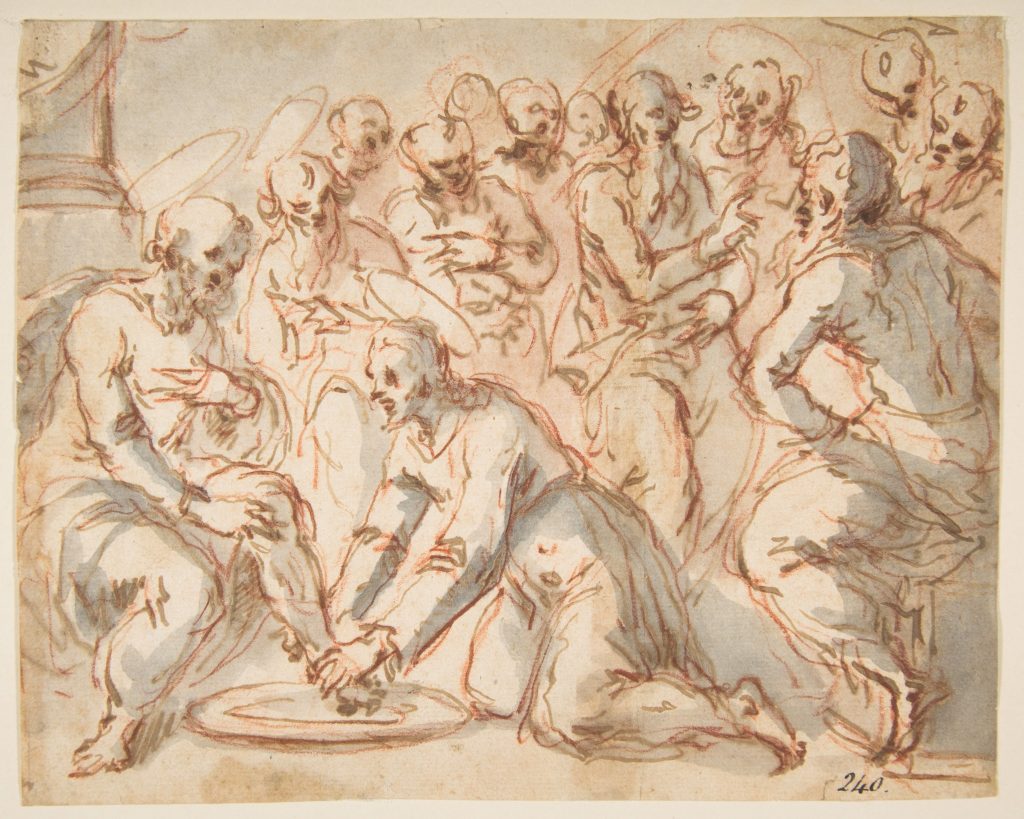Mary Ann O’Connor, 69, is a cradle Catholic and the oldest of seven children.
She was born in Santa Monica, grew up in the San Fernando Valley and trained on-site as a nurse at L.A. County-General — an experience that had “a huge impact.”
She worked bedside for 12 years, served two years in the military during the Vietnam War and then moved into management and hospital leadership. And for the last four years she has traveled to the L.A. Catholic Worker soup kitchen on Skid Row to wash and tend to the feet of the poor.
“You really can’t do something like this without a place like the Catholic Worker,” Mary Ann said. “If you tried to do it anywhere else, you would have formalities related to licensing and liability.
“But you walk into the soup kitchen at Gladys and 6th, the heart of Skid Row, and you are free to do the work, not as an expert, but responsibly, thoughtfully,” she added.
Karan Founds-Benton, the lead person and organizer of the foot care ministry at the Catholic Worker, has been Mary Ann’s teacher and mentor. “Through her, I came to love the work. I owe her so much,” she said.
By and large, people make a commitment to show up by signing up when they come to the kitchen for their Thursday noon meal. The foot washers usually start with a list of about 12 people, and they take walk-ins when they can. They work from 8 a.m. to noon every Friday.
There’s a large garden area that wraps around the kitchen. It’s a very pleasant area with trees, shrubbery, flowers, mosaic work. It’s fenced off from the street, but it’s on the street.
The washers spend an hour minimum, and often up to two, with each person. First the feet are soaked in warm water and castile soap.
“Everyone loves that. It’s very other-oriented. Is that warm enough? Do you want it cooler? Just so they can sit and relax into the experience,” said Mary Ann.
“We may be dealing with mental illness. We hear a lot of street talk. We engage in conversation as long as the other is engaging. But if they don’t want to talk, silence is not a problem.”
Just the gentle handling of the foot is communicating the preciousness of the person to them more than any conversation could.
As a bedside nurse, Mary Ann always stood over the patient in a position of power. Here, they’re on a plastic folding chair. She’s on an upturned milk crate.
“There’s a naturalness for me, having been a nurse, and therefore in contact with suffering bodies. But this experience resonates in a particular way because I’m clearly in a position of deference. I look up at them; they look down at me,” she said. “Emotionally, you might be as distraught over something in your own life as they are over their foot. You’re not in charge. I’m a very in-charge person. I love control and I’m a fixer.
“I always feel a communion,” she continued. “I’m touching their sacredness and it happens to be the sole of their foot. The place where they carry the burden of their life on the street. You are intentionally there to comfort, to listen, not to fix. You are very close to your own brokenness in that moment.”
Eighty percent of the people who want foot care are men. Nails may be very long, very tough. Seldom is someone free from fungus. Callouses embed themselves like rocks attached to the feet. Ulcers and sores are common.
Each foot requires tenderness, caution and care.
The session always ends with a foot rub. Then each person is given at least one pair of new socks and a pill bottle of Vicks VapoRub, an inexpensive foot fungus remedy.
“Where do you come from? How much are you being paid?” the people who come in often ask. They seem to be thinking, “Really? Such kindness happens in this world?”
“I have never finished working on someone’s feet without them putting their socks on and saying, ‘Thank you so much.’ A hundred percent of the time,” she recounted. “That lets me know I’ve just spent an hour and a half with someone I may never see again and I’ve given them the only, best gift I can.”
Mary Ann has just completed a two-year course called “The Living School” with Father Richard Rohr. St. Francis and his conversion around the leper, Jean Vanier of the L’Arche community and Mother Teresa — mystics all — have become spiritual guides.
“This work, ministry if you like, allows me to balance what I want for my life right now: a greater contemplativeness grounded in action,” she said.
“Now I recognize after many years of going off — to Appalachia, to South America — that this is the place I belong. Right back where I was born. I’m here. I can do what I feel called to do.”

